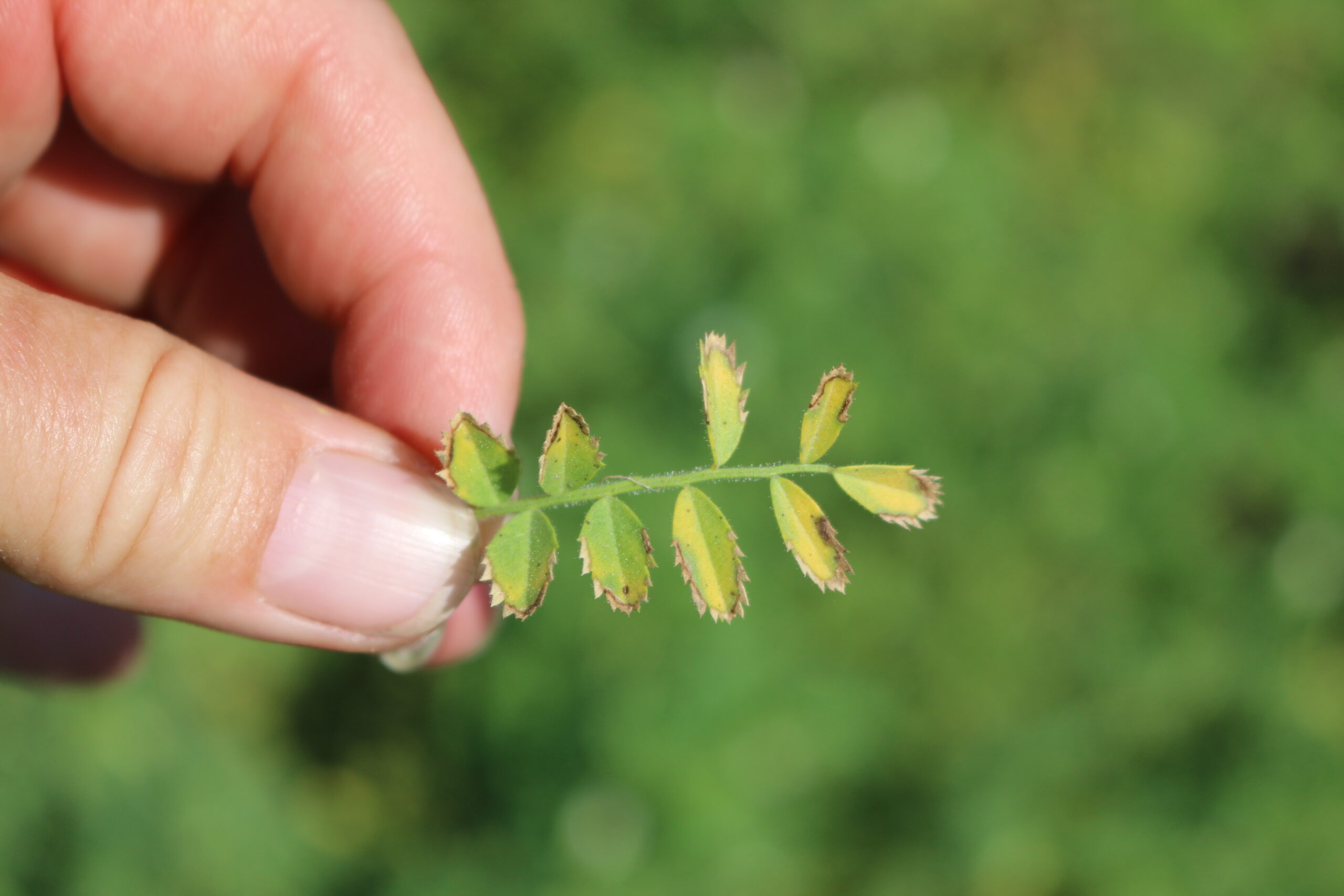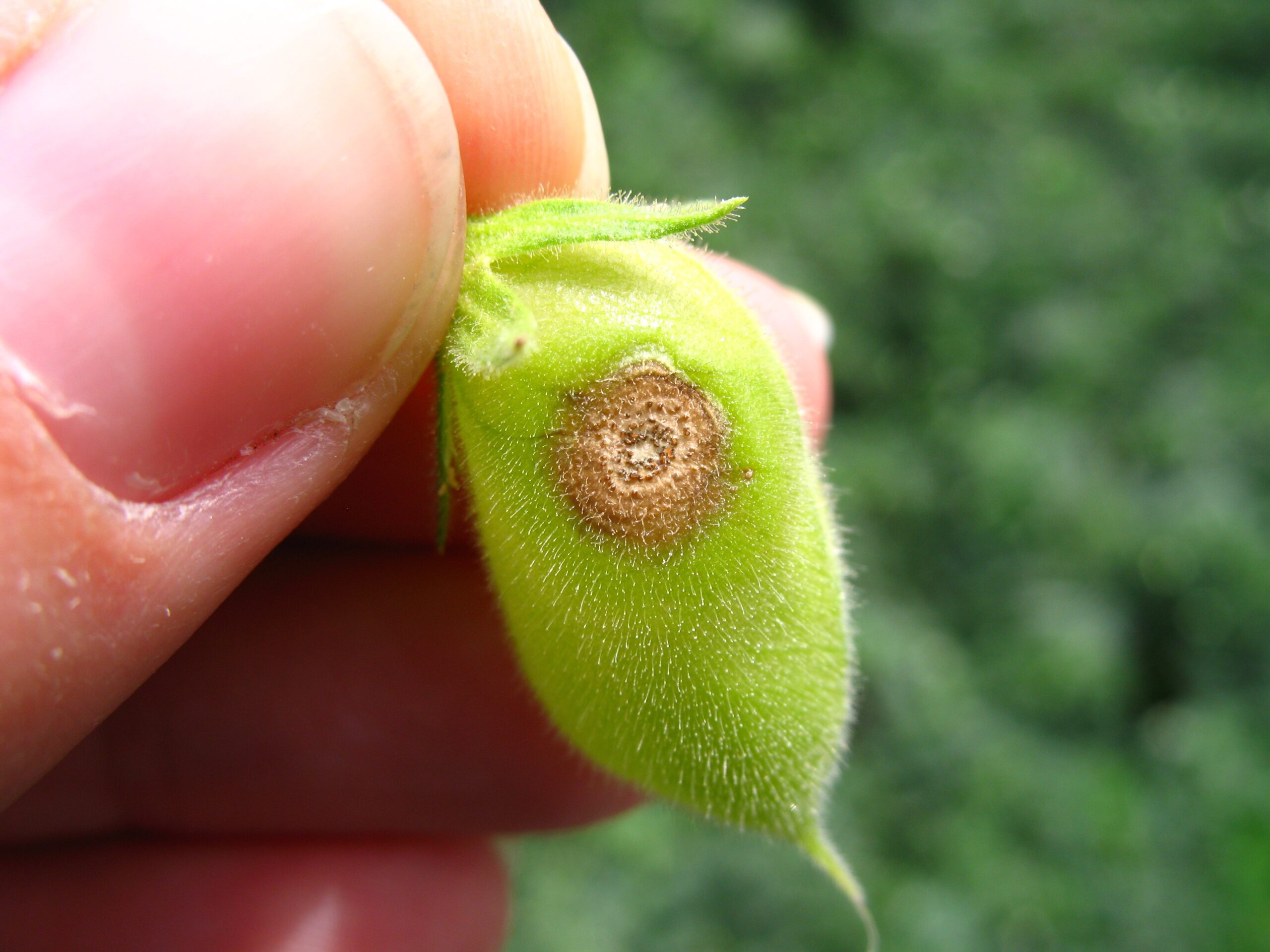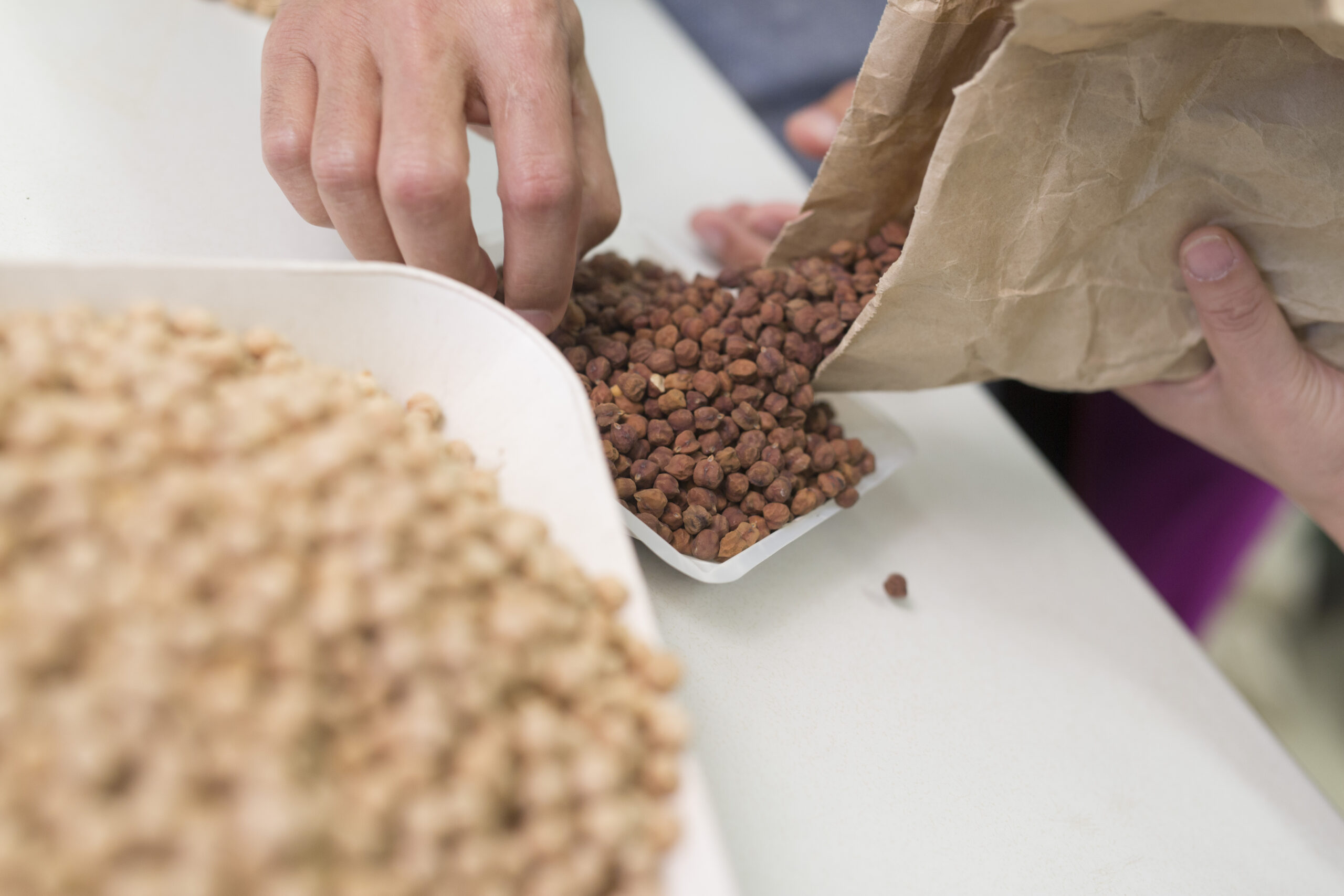Disease in chickpeas a serious concern and can have dramatic yield implications if not monitored and appropriate control measures are taken when risk is high. To determine the risk associated with Ascochyta blight in chickpeas, a disease decision support checklist has been developed as a working tool for producers.
Fungicide Decision Support Checklist for Chickpeas
| 1. Field History and Crop Rotation | Risk Factor |
| Crop is being grown in a region that has never had chickpea production | 0 |
| Crop is planted on land that has not had chickpeas for at least three years | 5 |
| Crop is planted on land that has had chickpeas in the last two years, or is located adjacent to chickpea stubble from the year before | 10 |
| 2. Chickpea Variety | Risk Factor |
| Desi variety or Kabuli variety rated as “fair” resistance to Ascochyta blight | 0 |
| Kabuli variety that is rated as “poor” | 5 |
| Kabuli variety that is rated as “very poor” | 10 |
| 3. Level of Seed-borne Disease and Use of Seed Treatment | Risk Factor |
| Seed test indicated no seed-borne Ascochyta and used a registered seed treatment for Ascochyta blight control | 0 |
| Seed test indicated low levels of Ascochyta (less than 1 per cent) AND used a registered seed treatment for Ascochyta blight control | 5 |
| Seed test indicated significant levels of Ascochyta (5 to 10 per cent) and used a registered seed treatment for Ascochyta blight control | 10 |
| The seed quality is unknown, or I am not using a seed treatment | 20 |
| 4. Presence of Disease Symptoms Since Last Fungicide Application | Risk Factor |
| No new disease lesions have developed since last fungicide application | 0 |
| Disease lesions have developed on new crop growth since last fungicide application | 10 |
| Leaf and/or stem lesions have developed and no fungicide has been applied | 20 |
| 5. Weather Conditions | Risk Factor |
| No rainfall in the past week and short-term forecast is for continued dry weather | 5 |
| Weather conditions are unknown | 10 |
| Rainfall or heavy dew has occurred during past week | 20 |
| Weather is unsettled, thunderstorms likely | 20 |
| 6. Other Crop Health Considerations | Risk Factor |
| Crop emerged well in the spring and there has been no significant weather/injury to crop | 0 |
| Crop was seeded very early and was slow to emerge | 5 |
| Crop was damaged by early herbicide application or soil residue | 10 |
| The crop has received a light to moderate hail shower in the past 24 hours | 10 |
| TOTAL SCORE OF RISK FACTORS (1+2+3+4+5+6): |
Source: Scouting and Management of Ascochyta Blight in Chickpea, Saskatchewan Ministry of Agriculture
Disease Risk Categories

Total Risk Value < 15:
Your risk is low and Ascochyta blight should not have a negative impact on your crop if you remain diligent about scouting and applying fungicides when necessary. Consider the following recommendations:
- Apply fungicide if the crop is at the seedling stage and a fungicide has not yet been applied.
- Delay fungicide application if there has been no new lesion development and there is no rain in the forecast.
Total Risk Value is 20 to 45:
Your risk is low to moderate. Continue to scout for new lesion development as your crop matures. Consider the following recommendations:
- Apply fungicide if it has been close to 14 days since the last application.
- Delay fungicide if less than 14 days since last application and there is no rain in the forecast.
Total Risk Value is 50 to 75:
Your risk is moderate and disease is either increasing in your crop due to favourable weather conditions, or because Ascochyta blight was established before a fungicide was applied. Some yield loss due to disease will occur. Consider the following recommendations:
- Apply fungicide if it has been close to 14 days since the last application.
Total Risk Value > 80:
Your risk is high and Ascochyta blight will impact your yield and seed quality. Consider the following recommendations:
- Apply fungicide if crop is in the flowering to early pod stages and there is a potential for suitable yield.
- Do not apply fungicide if disease is severe and there is little chance for economic return.
Source: Scouting and Management of Ascochyta Blight in Chickpea, Saskatchewan Ministry of Agriculture



